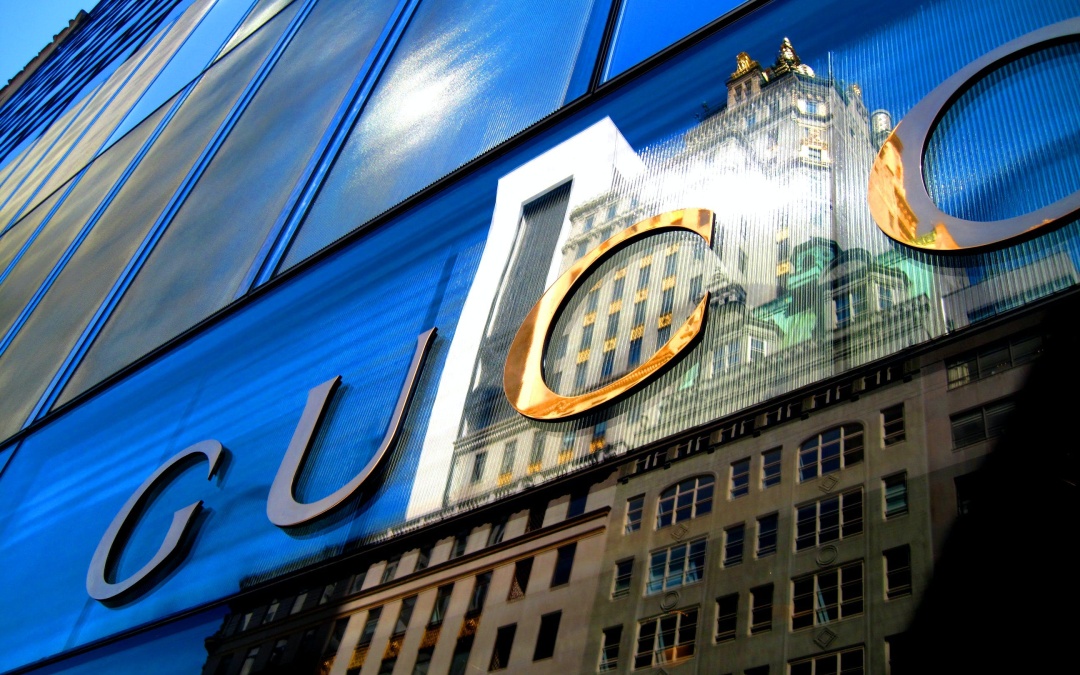
by admin | Nov 30, 2023 | BRANDING, STRATEGY
In the competitive world of business, a logo is far more than just a symbol; it’s the heartbeat of your brand. It’s the visual representation of your company’s values, mission, and identity. In this blog, we’ll delve into the profound importance of a logo in shaping your brand and why investing in it is a strategic decision for any business.
- Instant Recognition
Think of the Nike swoosh or the iconic golden arches of McDonald’s. A well-designed logo is a powerful tool for instant brand recognition. It’s the first thing customers see, and it’s what sticks in their minds. A logo can make your brand memorable in a crowded marketplace, giving you a competitive edge.
- Establishing Trust and Credibility
A professionally crafted logo lends your brand an air of credibility and trustworthiness. It signals that your business is established and takes its image seriously. A haphazard or amateurish logo can have the opposite effect, eroding trust and turning potential customers away.
- Creating Brand Differentiation
In a world where consumers have countless options, standing out is essential. Your logo is your brand’s unique identifier. A well-designed logo communicates your brand’s personality, values, and what sets you apart from competitors. It’s a visual differentiator that helps you leave a lasting impression.
- Consistency in Branding
Consistency is the bedrock of effective branding. Your logo serves as the cornerstone for maintaining a consistent brand image across all touchpoints, from your website and business cards to social media profiles and product packaging. This consistency reinforces your brand identity over time.
- Eliciting Emotions
Logos have the power to evoke emotions and connect with audiences on a profound level. Think about how the Apple logo is associated with innovation and sleek design, or how the Coca-Cola logo can evoke feelings of nostalgia. When a logo resonates emotionally, it fosters brand loyalty and advocacy.
- Adaptability and Scalability
A well-designed logo is versatile and can adapt to various mediums and platforms. It should be effective on a tiny smartphone screen and a giant billboard. Scalability ensures that your brand’s visual identity remains intact, no matter where it appears.
- Memorable Branding
In a world saturated with information and advertising, memorability is your brand’s secret weapon. A memorable logo ensures that your brand remains top-of-mind. When customers recall your logo, they’re more likely to choose your products or services over others.
- The Evolution of a Logo
A logo isn’t a static entity. It can evolve with your brand, reflecting growth and changes in your company’s identity. Consider the evolution of the Starbucks logo, which has subtly changed over the years while retaining its core elements. This adaptability allows your logo to stay relevant as your brand matures.
- Building Brand Equity
Brand equity is the intangible value your brand holds in the minds of consumers. A well-designed logo is a key contributor to building brand equity. As customers have positive experiences with your brand, they associate those feelings with your logo, enhancing its value and impact.
- Global Recognition
In an increasingly globalized world, your logo can transcend language barriers. It can convey your brand’s essence to diverse audiences worldwide. A universally appealing logo simplifies international expansion and fosters a sense of unity among customers, regardless of their location.
Your logo is the face of your brand, the visual signature that represents your business to the world. Recognizing the importance of a logo isn’t just about aesthetics; it’s about building a brand that resonates with your audience, instills trust, and stands out in a sea of competitors. So, don’t underestimate the power of your logo. Invest in its design and make it a strategic asset that fuels your brand’s success. Remember, a great logo isn’t just a symbol; it’s the embodiment of your brand’s essence. With its power to evoke emotions, create recognition, and build trust, your logo is an investment that can pay dividends for years to come.
Ready to create a logo that truly embodies your brand? Contact Baruch Design and Company today, and let’s collaborate to craft a logo that will set your brand apart and leave a lasting impression. Your journey to a remarkable logo and a stronger brand identity starts here.

by admin | Nov 30, 2023 | STRATEGY, WEBSITE DESIGN
In the vast digital landscape, the heartbeat of any business lies in its website. Whether you’re steering a small startup or navigating the corridors of a corporate giant, the web presence you craft can make or break your success. Let’s delve into some common mistakes that businesses, big and small, often make when it comes to their online storefronts.
- Neglecting Mobile Optimization: In the era of smartphones, overlooking mobile optimization is like handing customers an outdated map. Small businesses and corporations alike must ensure their websites are not just visually appealing on desktops but also seamlessly functional on mobile devices.
Imagine a local bakery, “Sweet Serenade,” that realized a significant portion of its customers visited their website on mobile devices. By optimizing their website for mobile, with easy navigation and quick-loading images, they transformed the online experience. Now, customers can effortlessly browse the delectable treats, placing orders with a few taps, turning their mobile visit into a delightful dance.
In the mobile age, your website is the stage, and users are the audience. Ensuring a seamless mobile experience isn’t just a trend; it’s the performance that keeps your audience captivated and coming back for an encore.
- Overlooking User Experience: It’s not just about flashy designs; it’s about user experience. From small buttons to confusing navigation, businesses of all sizes sometimes forget that a frustrated user is a lost customer. Keep it simple, intuitive, and user-friendly.
Take the case of “Artisan Echo,” a startup selling handmade jewelry. By designing a website that not only showcases products but also engages users through interactive features, like a virtual try-on tool and personalized recommendations, they turned their website into an immersive symphony. Visitors aren’t just shoppers; they’re participants in an artistic experience.
User experience isn’t just about functionality; it’s about creating an emotional connection. A website that resonates emotionally with users becomes more than a transactional space—it becomes a memorable and shareable experience.
- Ignoring SEO Basics: Search Engine Optimization (SEO) is not just a buzzword; it’s the key to unlocking the digital door. Small businesses often miss out on local SEO opportunities, while large corporations might assume their brand is enough. Regularly update content, use relevant keywords, and stay on top of the SEO game.
Picture “Organic Oasis,” a small health food store that struggled to reach local customers online. Through diligent local SEO efforts, such as optimizing Google My Business and creating location-specific content, they enchanted search engines. Now, when someone searches for “organic stores near me,” “Organic Oasis” is the mystical portal that appears, drawing in health-conscious customers.
SEO is the magical language that search engines understand. It’s not just about visibility; it’s about being the answer to your customers’ queries. Strategic SEO is the key to opening the right doors in the vast digital ether.
- Underestimating the Power of Content – Every Word Paints a Visual Epic: From concise product descriptions to engaging blog posts, content is king. Small businesses often struggle with producing consistent quality content, while larger corporations might become complacent. Regularly update your website with relevant, valuable content to keep your audience engaged and boost your search engine rankings.
Consider “Tech Odyssey,” a corporate giant in the tech industry. Rather than relying solely on product listings, they embarked on a content journey. Regularly publishing insightful blog posts, case studies, and video tutorials, they transformed their website into an educational hub. Customers aren’t just buyers; they are participants in a knowledge-sharing epic.
Content is the bridge that connects your brand with your audience intellectually. In the digital age, educating and inspiring your audience through valuable content not only positions you as an industry authority but also forges a lasting connection.
- Lack of Social Media Integration – Threads of Connection Beyond Your Domain: In the age of connectivity, your website should not operate in isolation. Small businesses often underestimate the impact of social media, while large corporations might miss the opportunity for real-time engagement. Integrate social media seamlessly into your website to leverage the power of online communities.
Think of “Culinary Canvas,” a startup in the food industry. Beyond showcasing their menu on the website, they seamlessly integrated social media feeds. Customers can not only explore the gastronomic delights visually but also engage in conversations, sharing their experiences and becoming part of the flavorful social tapestry.
Social media isn’t just an extension; it’s a vibrant thread in the fabric of your brand. Beyond showcasing, it’s about fostering real-time connections and conversations that resonate with your audience, weaving a tapestry that extends far beyond your website.
- Security Blind Spots: Cybersecurity is not just a concern for big players. Small businesses are often targeted due to perceived vulnerabilities, while large corporations might become complacent, thinking they are invulnerable. Regularly update security measures, use encryption, and educate your team to safeguard your digital fortress.
“SecureSphere,” a cybersecurity startup, understands the importance of dancing gracefully in the digital realm. Regularly updating their software, implementing multi-factor authentication, and conducting employee training, they waltz through the cyber landscape with elegance, ensuring their clients’ digital kingdoms remain impervious to threats.
In the realm of cybersecurity, elegance is synonymous with robustness. A well-choreographed security strategy isn’t just a necessity; it’s the dance that safeguards your digital assets, instilling confidence in both your team and your clients.
WordPress is a popular platform, and fortifying it with security plugins is a wise move to enhance the protection of your digital realm. Here are some reputable security plugins that can be part of your cybersecurity waltz:
Wordfence Security: (visit website)
Features: Firewall protection, malware scanning, login attempt monitoring, and two-factor authentication. What Works: Wordfence is a comprehensive security plugin that actively blocks threats and provides essential features such as firewall protection and malware scanning. Its two-factor authentication adds an extra layer of security to your WordPress site.
Sucuri Security: (view website)
Features: Security activity auditing, malware scanning, remote malware scanning, and website firewall.
What Works: Sucuri Security is known for its monitoring capabilities and robust website firewall. With features like security activity auditing, it offers a comprehensive solution for detecting and mitigating potential security threats.
All In One WP Security & Firewall: (visit website)
Features: User account security, firewall protection, login lockdown, and database security.
What Works: “All In One WP Security & Firewall is a comprehensive security plugin that covers various aspects of WordPress security. Its features, such as user account security and firewall protection, contribute to a well-rounded security strategy.”
Cerber Security, Antispam & Malware Scan: (visit website)
Features: Firewall protection, anti-spam, malware scanning, and login attempts tracking.
What Works: Cerber Security offers a multifaceted approach to WordPress security, incorporating features like firewall protection, anti-spam, and malware scanning. It is designed to add layers of protection and enhance the overall security posture of your website.
While implementing security plugins is crucial, it’s equally important to maintain regular updates for your WordPress core, themes, and plugins. A comprehensive security strategy involves a combination of proactive measures, continuous monitoring, and timely updates to ensure the ongoing security of your WordPress site.
- Forgetting Analytics: The power of data cannot be overstated. From small businesses striving for visibility to large corporations monitoring global trends, analytics provide valuable insights. Implement robust analytics tools to track user behavior, analyze trends, and adapt your strategy accordingly. For effective navigation through the complexities of data, consider the implementation of the following analytical tools:
Google Analytics: (visit website)
Capabilities: Website traffic analysis, user behavior tracking, and conversion tracking.
How it Works: Google Analytics is a fundamental tool for understanding website performance. It provides insights into user behavior, allowing businesses to make informed decisions based on data-driven metrics.
Mixpanel: (visit website)
Capabilities: User engagement tracking, retention analysis, and event-based analytics.
How it Works: Mixpanel is designed for businesses looking to track and analyze user interactions comprehensively. Its focus on event-based analytics offers a nuanced understanding of user engagement and retention.
Hotjar: (visit website)
Capabilities: Heatmaps, session recordings, and feedback polls for user experience analysis.
How it Works: “Hotjar is a versatile tool that helps in visualizing user behavior through heatmaps and session recordings. It provides actionable insights for optimizing the user experience on websites.”
Tableau: (visit website)
Capabilities: Data visualization, business intelligence, and interactive dashboards.
How it Works: Tableau is a powerful tool for visualizing complex data sets. It enables businesses to create interactive dashboards, making it easier to derive meaningful insights from diverse data sources.
Adobe Analytics: (visit website)
Capabilities: Advanced analytics, real-time data tracking, and marketing attribution.
How it Works: Adobe Analytics is a comprehensive solution for businesses seeking advanced analytics capabilities. Its real-time data tracking and marketing attribution features make it a valuable asset for data-driven decision-making.
Looker: (visit website)
Capabilities: Business intelligence, data exploration, and collaborative analytics.
How it Works: Looker is an integrated platform that facilitates collaborative analytics and data exploration. It empowers teams to work together in uncovering actionable insights from their data.
Matomo (formerly Piwik): (view website)
Capabilities: Open-source analytics, user privacy-focused, and customizable reporting.
How it Works: Matomo, as an open-source analytics solution, provides businesses with a customizable and privacy-focused alternative. It allows organizations to tailor analytics reporting according to their specific needs.
Ready to transform your digital presence? Let us guide you towards a website that not only avoids these common pitfalls but also propels your business to new heights. Whether you’re a small business dreaming big or a corporate giant seeking digital finesse, our team is here to craft a bespoke solution tailored to your needs. Work with us, and let’s elevate your online journey together.



Recent Comments